Have you ever dreamed of creating a tiny, enchanting world right in your backyard or patio? Fairy gardens have become a delightful trend for garden lovers of all ages. These miniature landscapes, filled with charming details and colorful blooms, add a whimsical touch to any outdoor or indoor space.
Whether you want to craft a secret hideaway under a tree, a tabletop garden, or a corner planter filled with magic, this guide will help you bring your fairy garden dreams to life. Let’s dive into 10 creative tips to help you design a captivating fairy garden filled with flowers and fantasy.
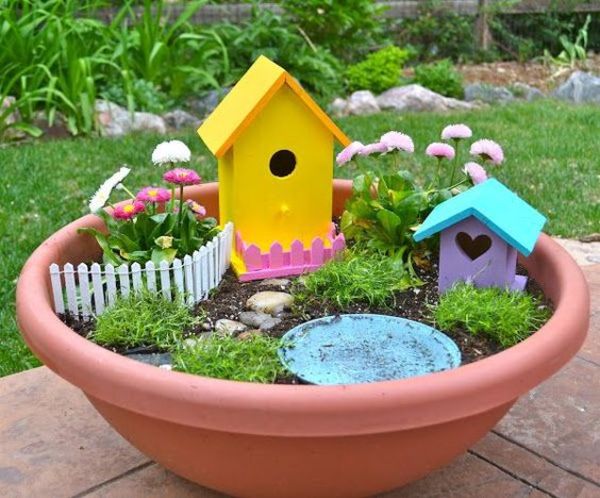
1. Choose the Perfect Location
Before you start gathering plants and tiny furniture, decide where your fairy garden will live. The right location sets the mood for your miniature world.
Ideal locations for a fairy garden:
- Beneath a tree or shady shrub
- In a large flowerpot or planter box
- Along a garden path
- On a patio tabletop or balcony corner
- Inside a terrarium or glass container (for indoor fairy gardens)
Consider the amount of sunlight the location receives. Most flowering plants need at least 4–6 hours of light daily, so choose a spot that suits the flower varieties you plan to use.

2. Pick a Theme for Your Fairy Garden
Having a theme brings harmony to your miniature garden. Will it be a woodland escape, a beachy retreat, or a secret garden bursting with blooms?
Popular fairy garden themes:
- Woodland cottage: Moss, ferns, wildflowers, and natural-looking furniture.
- Flower village: Bright, colorful flowers with tiny homes and picket fences.
- Magical meadow: Butterflies, fairies, and delicate flowering ground covers.
- Fairy beach hideout: Succulents, sand, seashells, and driftwood.
Your theme will guide your choice of plants, accessories, and overall design style.
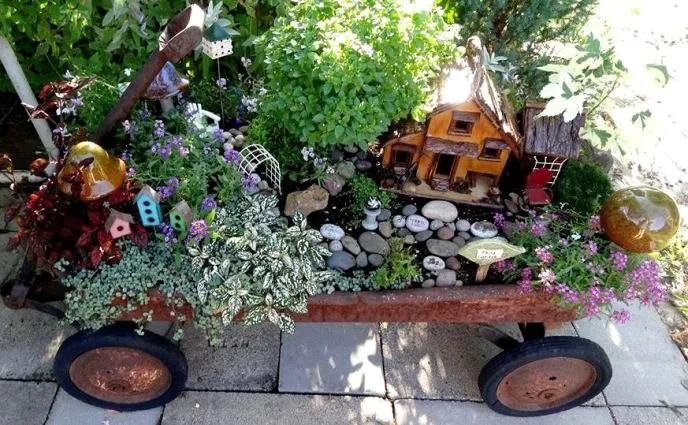
3. Select the Right Flowers and Plants
Choosing the right plants is essential for creating an enchanting fairy garden. Opt for small, low-growing, or miniature flowering plants that won’t overpower your tiny accessories.
Charming flowering plants for fairy gardens:
- Miniature roses: Tiny blooms in soft colors.
- Alyssum: Small white or purple flowers with a sweet scent.
- Violas or pansies: Cheerful, colorful faces.
- Dianthus: Petite, fragrant blooms.
- Lobelia: Trailing blue or purple flowers.
- Campanula (Bellflower): Mini bell-shaped blooms.
Mix these with lush greenery like moss, baby tears, thyme, and ferns to soften the landscape.
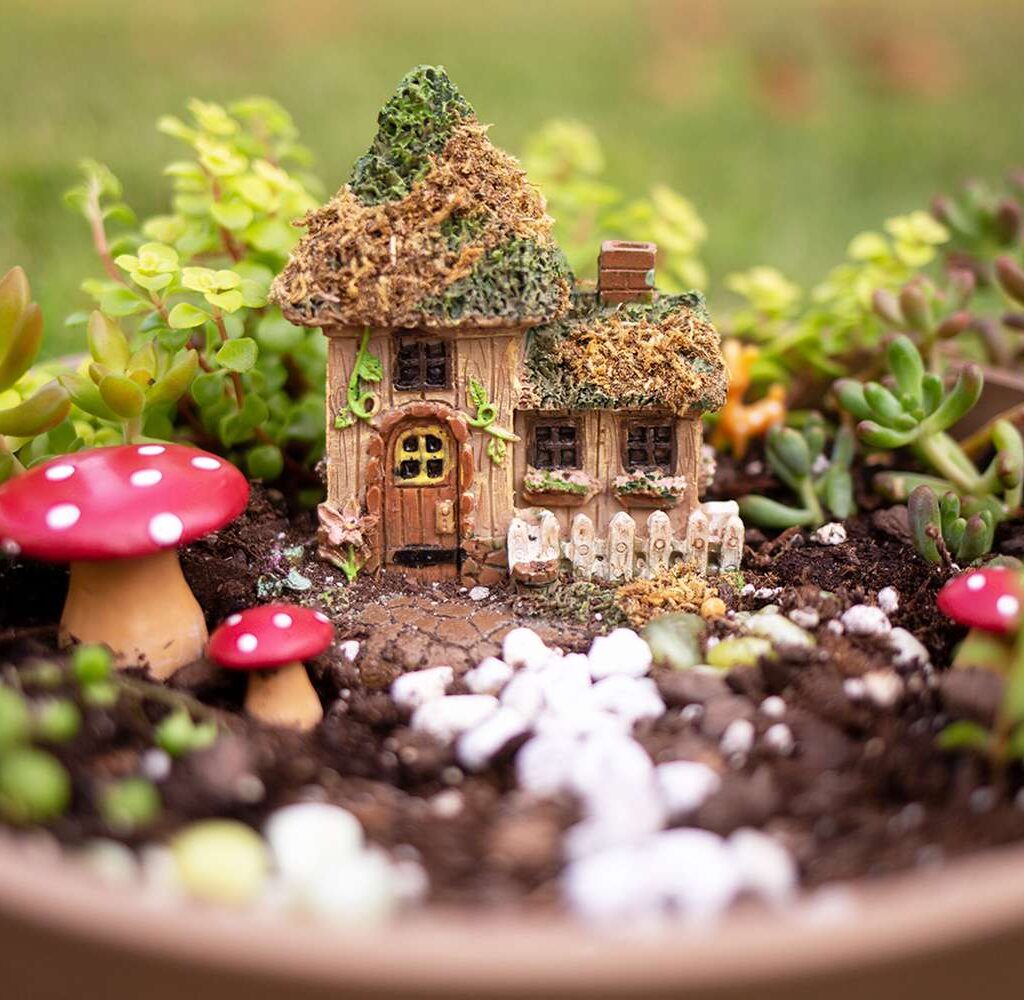
4. Use the Right Container and Soil
If you’re creating a potted or tabletop fairy garden, the container matters. It should have good drainage to keep your flowers healthy.
Container ideas:
- Large terracotta or ceramic pots
- Old wooden crates
- Hollowed-out tree stumps
- Vintage teacups or bowls for tiny indoor gardens
Soil tips:
- Use a high-quality potting mix with good drainage.
- Add a layer of pebbles at the bottom to prevent root rot.
- For succulent fairy gardens, use cactus mix.
The right soil keeps your flowering plants happy and thriving.
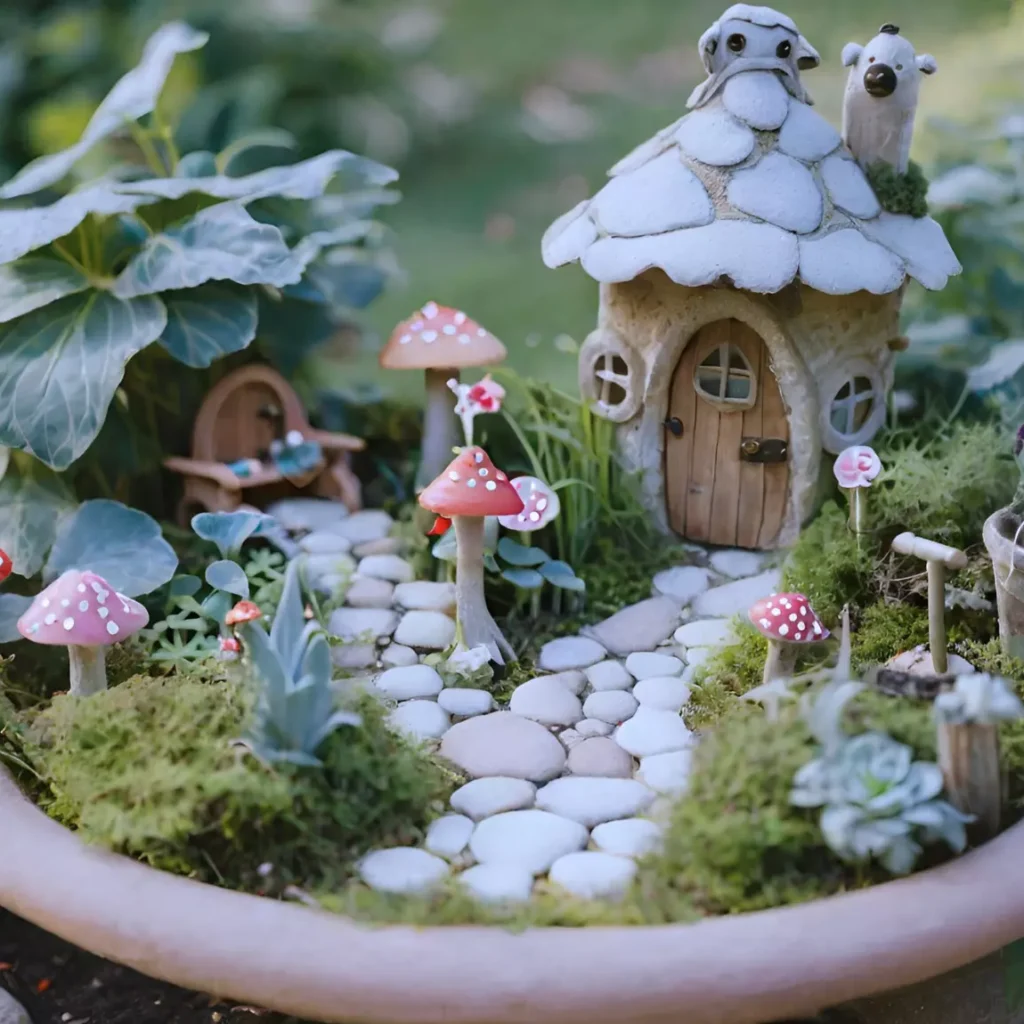
5. Add Fairy Garden Accessories and Decorations
This is where the magic happens! Accessories transform a simple flower arrangement into a tiny enchanted world.
Fun fairy garden decorations:
- Miniature fairy figurines
- Tiny houses, doors, and windows
- Mini garden furniture like benches and arbors
- Pebble pathways
- Mushrooms (real or decorative)
- Fences, bridges, and swings
- LED fairy lights or glow-in-the-dark pebbles for evening sparkle
Use natural materials like bark, stones, and driftwood to give your fairy garden an organic, whimsical feel.
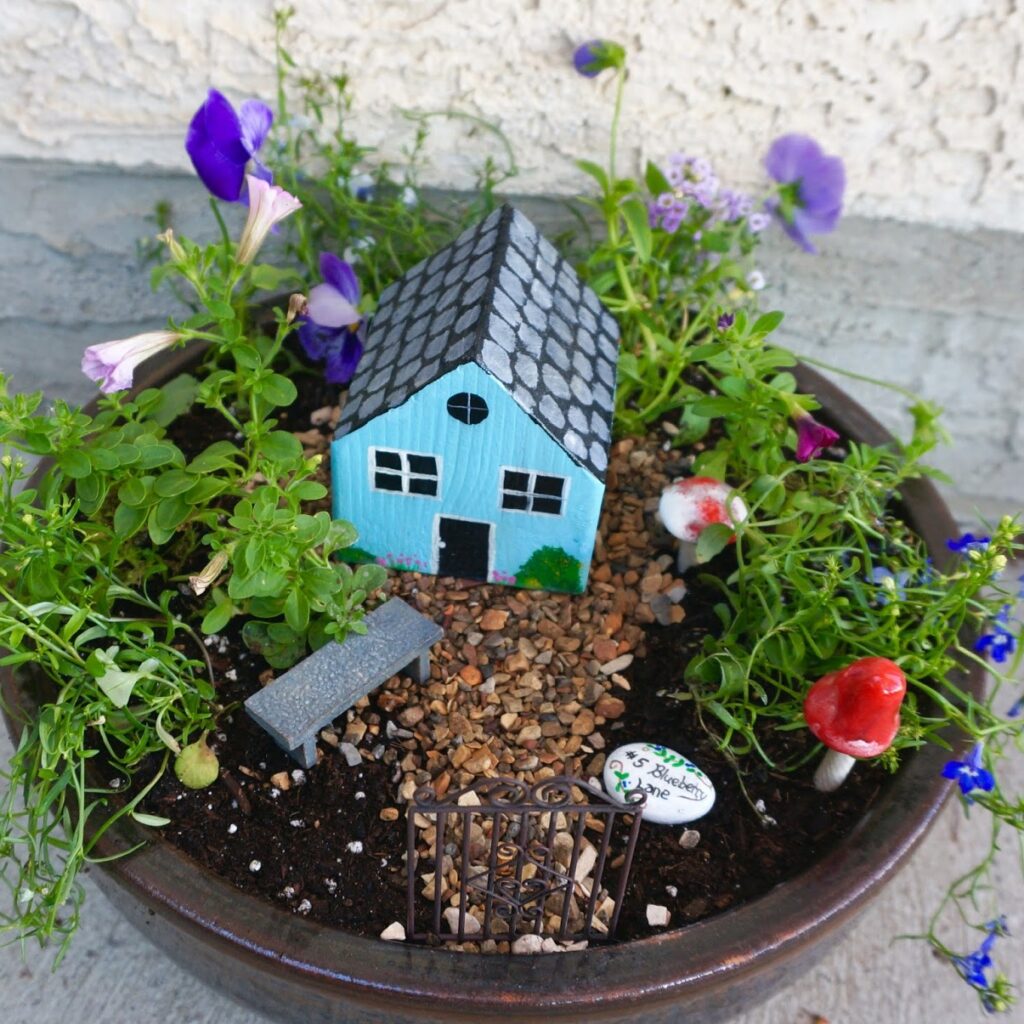
6. Create Layers and Levels for Visual Interest
A flat fairy garden can look dull — adding height and depth makes your miniature world more dynamic and magical.
Ideas for layering:
- Create small hills with extra soil.
- Use rocks, broken pots, or driftwood to build terraces.
- Place taller flowering plants at the back and trailing ones at the front.
- Use miniature trellises for climbing plants like small ivy or lobelia.
This creates the illusion of a lush, expansive landscape in a tiny space.
7. Use Moss and Ground Covers to Fill Empty Spaces
In fairy gardens, the space between flowers is just as important as the blooms themselves. Soft, green ground covers make the garden feel lush and lived-in.
Excellent fairy garden ground covers:
- Irish moss: Soft and velvety.
- Baby tears: Tiny, round leaves.
- Creeping thyme: Fragrant and flowering.
- Sedum (Stonecrop): Hardy and succulent.
They not only beautify the garden but help retain moisture in the soil.
8. Choose Miniature Flowering Vines and Trailing Plants
Trailing plants add movement and softness to fairy gardens, making them feel natural and unstructured.
Lovely trailing plants for fairy gardens:
- Lobelia: Blue or purple cascading flowers.
- Bacopa: Tiny white or lavender blooms.
- Creeping Jenny: Bright green foliage.
- Verbena: Mini flowers in a rainbow of shades.
These plants tumble over edges and soften container borders, giving your fairy garden a storybook charm.
9. Care for Your Fairy Garden Like a Pro
Even the tiniest gardens need regular care to stay beautiful.
Fairy garden care tips:
- Water regularly, especially for small containers that dry out quickly.
- Pinch back spent flowers to encourage new blooms.
- Trim trailing plants to keep them from overpowering decorations.
- Refresh moss and ground cover if they begin to yellow.
- Clean accessories occasionally to prevent mildew or dirt buildup.
Pay attention to sunlight needs and adjust your garden’s location if your plants start looking stressed.
10. Change with the Seasons and Add New Magic
One of the joys of a fairy garden is its ever-changing nature. You can refresh it with seasonal touches to keep it exciting and relevant year-round.
Seasonal ideas:
- Spring: Add pastel flowers, tiny Easter eggs, and butterfly picks.
- Summer: Bright blooms, seashells, and miniature beach chairs.
- Fall: Tiny pumpkins, acorns, and autumn flowers like mums.
- Winter: Faux snow, evergreen sprigs, and tiny lanterns.
Swapping out flowers and accessories keeps your fairy garden lively and fun to maintain.
Final Thoughts: Let Your Imagination Lead the Way
Fairy gardens are about more than just plants — they’re tiny worlds fueled by creativity, magic, and a love for nature’s beauty. By combining flowering plants with charming accessories and thoughtful design, you can build an enchanting miniature garden that delights both children and adults alike.
So, grab a container, gather your flowers, and start creating your own whimsical escape. After all, there’s always room for a little more magic in the garden.





